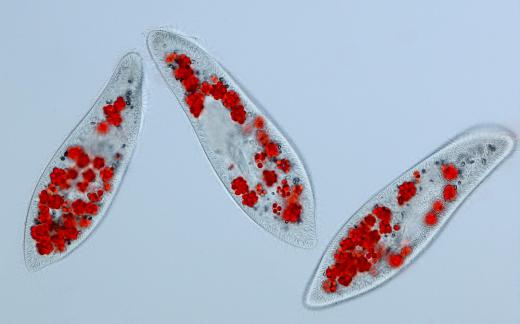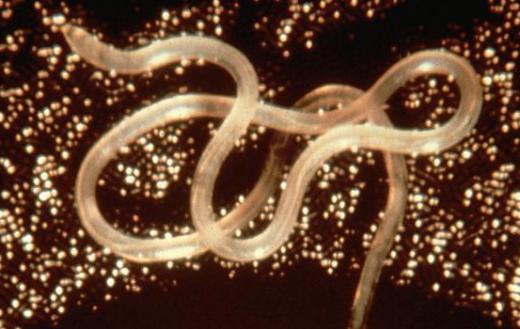What are Some Common Microscopic Animals?
 Michael Anissimov
Michael Anissimov
Microscopic animals are animals that are too small to be seen by the naked eye. Microorganisms such as bacteria are almost all too small to be seen without assistance, though these are not qualified as animals. Eukaryotic (complex-celled) unicellular organisms with animal-like characteristics are called protists, but these too are not considered part of Kingdom Animalia (also known as metazoa). True animals are multicellular and have differentiated tissues.
Animals that are too small to see without a microscope are the most numerous of all animals. If aliens were instructed to take a random animal from Earth, they'd probably grab some type of microscopic animal. Common ones include planarians (flatworms); many types of mites, including dust mites and spider mites; and aquatic crustaceans, such as copepods and cladocerans (water fleas). The most numerous are nematodes (roundworms), rotifers (aquatic filter-feeders), and tardigrades (water bears). Nematodes, in particular, are probably the most numerous animal on Earth, representing at least 90% of all life on the sea floor, and they are ubiquitous in all habitable environments on land and sea.

Microscopic animals are part of a size continuum that stretches all the way from viruses to the largest living organisms. They were first discovered by the Dutch scientist Antonie van Leeuwenhoek, the "Father of Microbiology," in 1675, using microscopes of his own design, some of which could magnify up to 500 times. The smallest object that can be seen with the unaided human eye ranges from about 1/40 to 1 mm, but "microscopic" often refers to any animal smaller than 1 mm in width, especially smaller than 1/10 mm in width.

These tiny animals are extremely important to the global ecosystem, making up a significant portion of biomass and representing the base of some food webs. The smallest, like rotifers, mostly live on bacteria, while larger specimens consume smaller animals or suck fluids from trees. Mites are especially adapted to the latter, and are found on large numbers under the leaves of many plants. Dust mites, the most common cause of allergies, are found in nearly every human home on the planet, where they survive on dead skin cells that drop from human inhabitants. A common strategy for killing these tiny beasts is to reduce ambient moisture.
Because microscopic animals are so numerous and distributed, only a portion of them have been described by science. Others will surely be discovered in the future, adding to scientists' knowledge of the planet's biodiversity.
AS FEATURED ON:
AS FEATURED ON:














Discussion Comments
Notonectidae are up to 2 cm in size, so they are clearly not microscopic.
I think that if these microscopic animals are contributing to spreading viruses, then more effort should done to alert inhabitants about the dangers caused by these small animals.
Would you consider tiny insects like notonectidae to be microscopic organisms/animals? Or would they simply be small, rather than microscopic?
After reading this, I am so glad that I don't have a phobia of microscopic invertebrates -- now that I read how common they are, I don't think I'd be able to stand it! I'd have to go into one of those clean rooms at the hospital, I'd be so freaked out!
This was really informative though, and now I can totally gross out my friends pointing out all the tiny organisms and animals all around us.
It's really amazing how many animals exist that we don't even think about. For instance, if you asked me to name the animals in a pond, I'd think of a frog, or animals like a pond snail if I was feeling really adventurous.
But I would never have thought about all the other animals that live in that, or in any other environment. I mean, it's not like rotifers or water bears would be the first thing on my mind.
I guess that just goes to show you how human-focused our view of the world is.
Post your comments